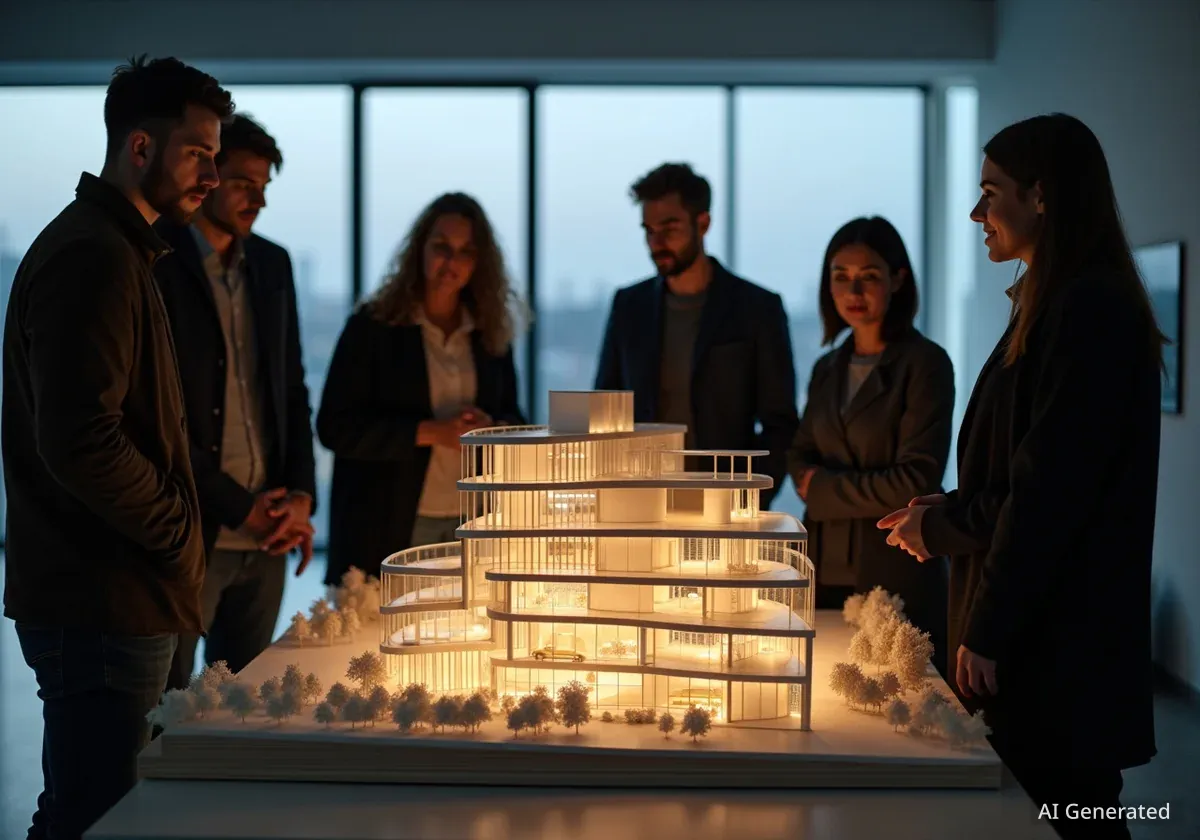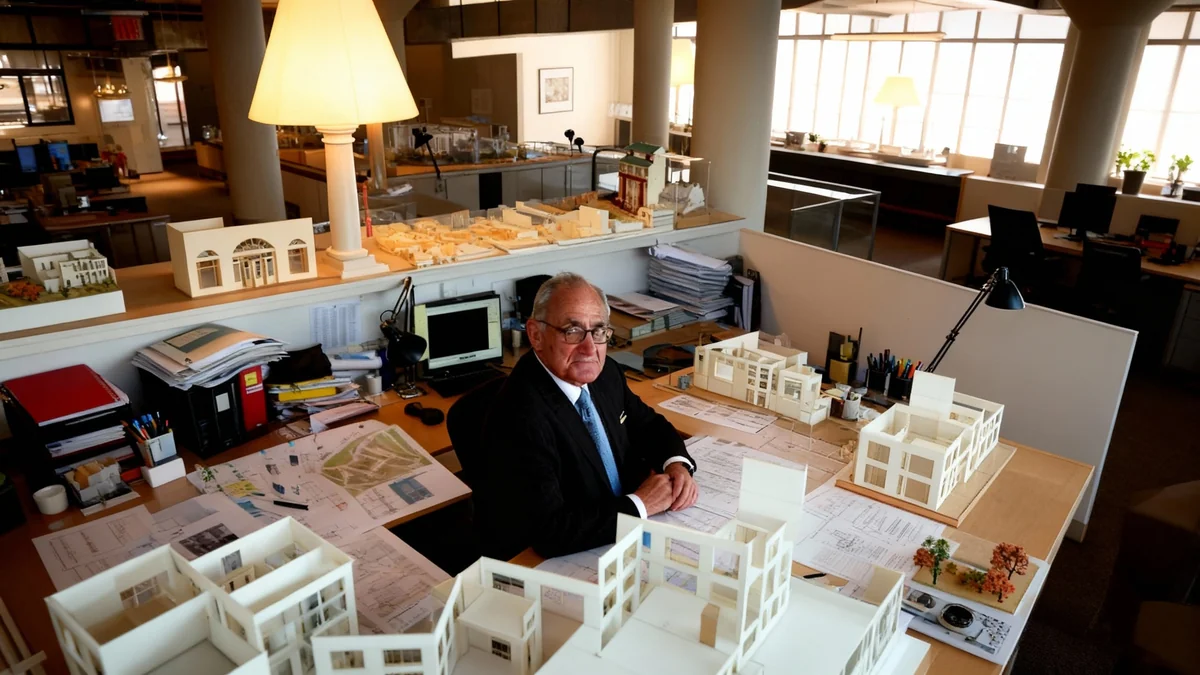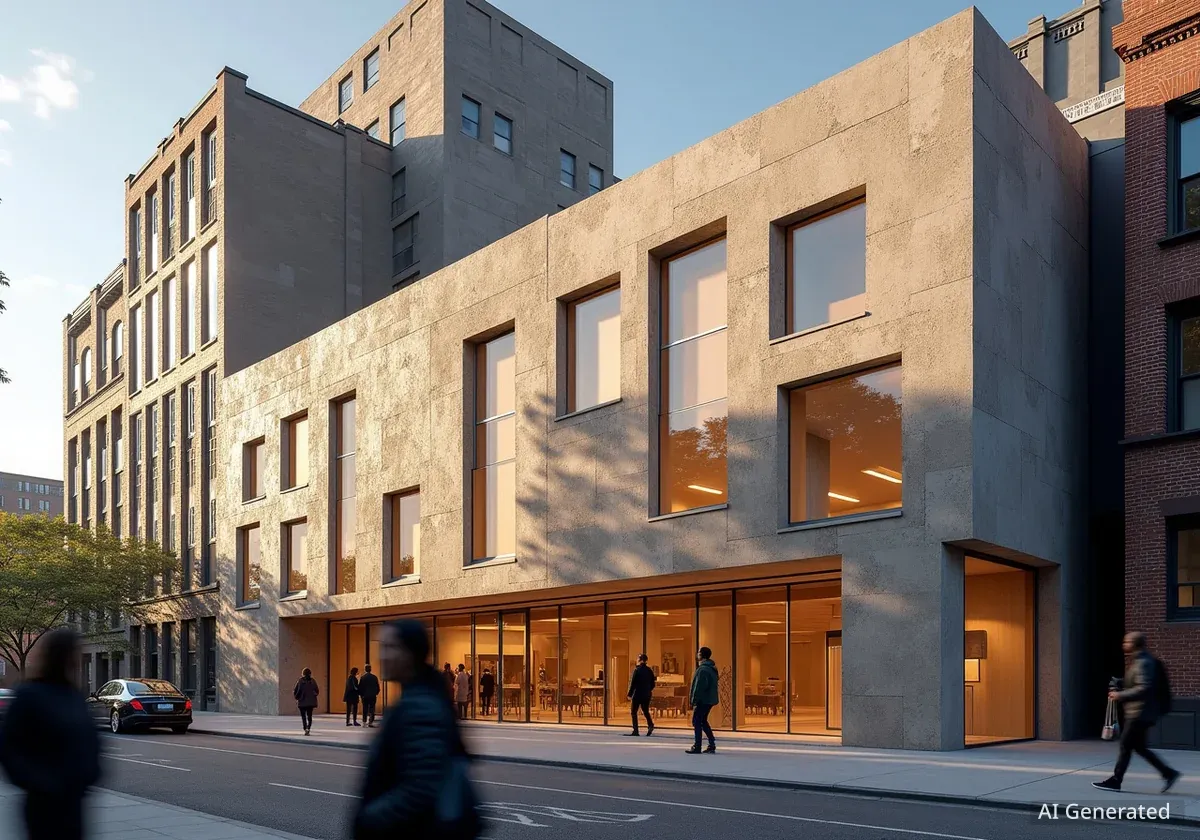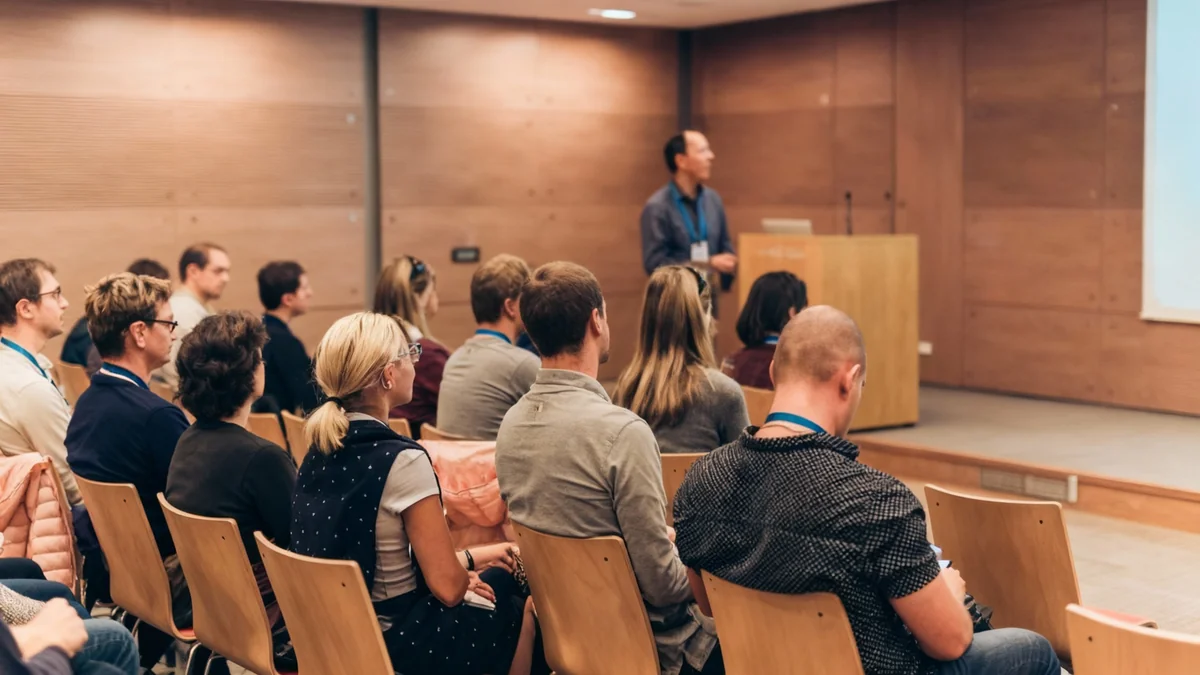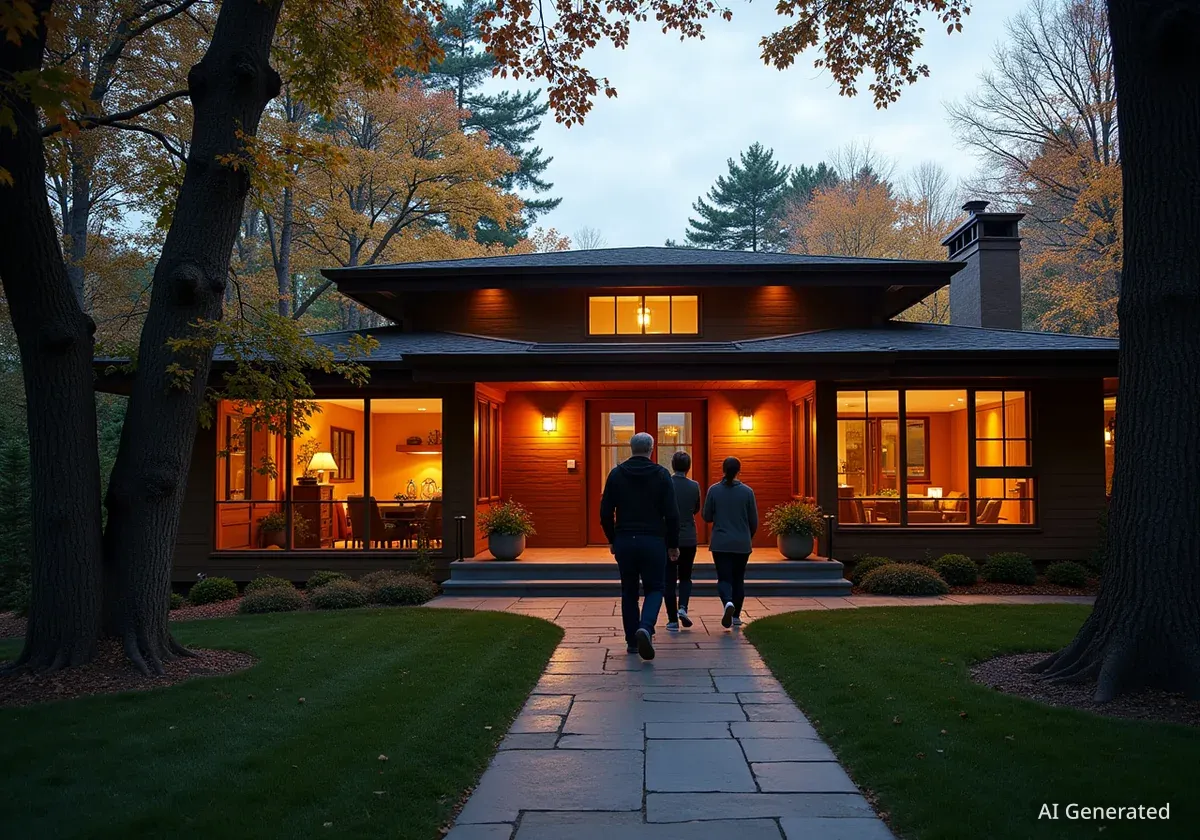Architectural discussions this week highlighted themes of resilience, equity, and cultural relevance. These topics gained prominence during World Architecture Day. The field of architecture is broadening its understanding of strength. It now includes not only structural durability but also frameworks for inclusive, adaptable, and environmentally conscious design. Recent developments show architecture as a tool for social engagement and long-term stewardship amidst global challenges.
Key Takeaways
- World Architecture Day emphasized 'Design for Strength,' focusing on ecological balance and social equity.
- New initiatives promote gender-inclusive design in public spaces across the UK.
- Lina Ghotmeh was recognized on the TIME100 Next 2025 list for influential architecture.
- ReSa Architects and Yasmeen Lari received awards at the Lisbon Architecture Triennale.
- Major new projects include Foster + Partners' Mayfair development, Gothenburg's Arena Quarter, and Rwanda's Isōko Centre.
Rethinking Strength and Resilience in Design
World Architecture Day, observed on the first Monday of October, centered on the International Union of Architects' (UIA) theme: "Design for Strength." This theme encourages architects to think about resilience beyond simple structural endurance. It comes at a time of significant environmental and social changes.
The UIA's call is for an approach that integrates ecological balance, cultural continuity, and social equity. These are seen as crucial aspects of strength. Instead of equating durability with rigidity, this view promotes adaptable cities and long-lasting structures. Such designs can support communities through crises and transformations. Architecture is now considered a medium of care, not just construction.
Fact: World Architecture Day
World Architecture Day is celebrated annually on the first Monday of October. It aims to remind the world about the role and responsibilities of architects in addressing global challenges.
Promoting Equity in Public Spaces
This broader understanding of strength aligns with ongoing efforts to foster equity in the built environment. For example, the London-based charity Make Space for Girls recently launched a new three-year strategy. Its goal is to advance gender-inclusive design in public spaces and parks across the United Kingdom.
The organization addresses the lack of representation for teenage girls in urban planning. It achieves this by combining research, advocacy, and collaboration with local councils. This initiative aims to create spaces that are more welcoming and accessible for all community members.
"Architecture is increasingly positioned as a tool for social engagement and long-term stewardship in the face of ongoing global challenges," stated an architectural expert.
Recognizing Architectural Innovation and Leadership
This week also celebrated significant architectural innovation and leadership. Several international recognitions highlighted architecture's evolving cultural role. These awards and lists underscore the profession's impact on society and design.
Lina Ghotmeh, a French-Lebanese architect, was named to the TIME100 Next 2025 list. She is recognized as one of the world's most influential rising stars. Notably, she is the only architect featured on this prestigious list. Ghotmeh is known for her materially sensitive and context-driven practice.
Danish architect Bjarke Ingels described Ghotmeh's work as balancing "history and experimentation." Her portfolio includes the Serpentine Pavilion 2023 in London, the Hermès Workshop in Normandy, and the Bahrain Pavilion for Expo 2025 Osaka. Her designs embody architecture that is both deeply rooted and forward-looking.
Context: TIME100 Next List
The TIME100 Next list identifies 100 rising stars who are shaping the future across various fields, including arts, politics, and business. Inclusion on this list signifies significant influence and potential global impact.
Awards at Lisbon Architecture Triennale
At the Lisbon Architecture Triennale, the Début Award 2025 was presented to ReSa Architects. This Indian collective explores architecture as a performative and social process. Their work challenges static definitions of 'site' by treating space as an evolving "situation." This approach expands architecture's disciplinary and cultural boundaries.
The Triennale also honored Yasmeen Lari of Pakistan with the Lifetime Achievement Award. This award recognizes her pioneering work in socially and climate-resilient architecture. Lari is the first laureate from the Global South to receive this honor. She joins a distinguished group of past recipients, including Marina Tabassum and Lacaton & Vassal.
- Lina Ghotmeh: TIME100 Next 2025 list, known for context-driven designs.
- ReSa Architects: Début Award 2025, for exploring architecture as a social process.
- Yasmeen Lari: Lifetime Achievement Award, for pioneering climate-resilient architecture.
Major New Architectural Commissions Underway
Several significant construction projects are now underway or have been recently commissioned, shaping urban landscapes globally. These developments reflect current trends in urban planning and design.
Foster + Partners Development in Mayfair
Construction has begun on a new mixed-use development by Foster + Partners. This project is located at the intersection of New Bond Street and Grafton Street in Mayfair, London. Developed by O&H, the scheme will introduce premium retail spaces and flexible office areas. The design respects the district's historic character.
The facade design draws from local craftsmanship traditions. It combines profiled artisan brick with bronze-framed display windows and cantilevered bay windows. These features allow for natural ventilation. Retail areas will occupy the lower levels, while the upper floors will offer adaptable workspace. A landscaped terrace will crown the setback fifth floor. A zinc-clad roof will integrate photovoltaic panels and mansard windows, offering views toward Piccadilly.
Fact: Mixed-Use Developments
Mixed-use developments combine residential, commercial, cultural, institutional, or industrial uses. This approach aims to create vibrant, walkable communities and reduce reliance on single-use zoning.
Gothenburg's New Arena Quarter
White Arkitekter has been chosen to design Gothenburg's new Arena Quarter. This is a major urban development project that will redefine the city's cultural and entertainment hub. The scheme will replace the historic Scandinavium arena. It will introduce a new multipurpose venue, a smaller Annexet arena, a training rink, a hotel, and active street-level spaces.
Designed in collaboration with Arup, Allies & Morrison, Stadia Design, and Sweco, the proposal emphasizes connectivity. It links large-scale event spaces with everyday urban life. Two new public squares and a park will strengthen connections between Sankt Sigfrids plan and Götaplatsen. This project aims to create a more integrated and pedestrian-friendly urban environment.
Rwanda's Isōko Centre for Humanity
Adjaye Associates has been appointed to design the Isōko Centre for Humanity in Bugesera, Rwanda. This landmark initiative by the Aegis Trust focuses on memory, peacebuilding, and education. It is envisioned as a global hub for preventing atrocities and promoting reconciliation. The project reflects Rwanda's journey from genocide to healing.
The Centre was highlighted at the Clinton Global Initiative. It will train future peace leaders and foster intercultural understanding. Led by David Adjaye, the design seeks to create a space where past lessons inspire collective renewal. The project is a significant step towards establishing an enduring architectural symbol of remembrance and hope. It underscores architecture's power to contribute to social healing and future stability.
Context: Aegis Trust
The Aegis Trust works to prevent genocide and mass atrocities worldwide. It operates the Kigali Genocide Memorial in Rwanda and supports peace education programs globally.
These projects, from urban redevelopments to cultural centers, demonstrate the diverse impact of architectural practice. They highlight how design continues to evolve, addressing societal needs and global challenges through innovative and thoughtful approaches.
